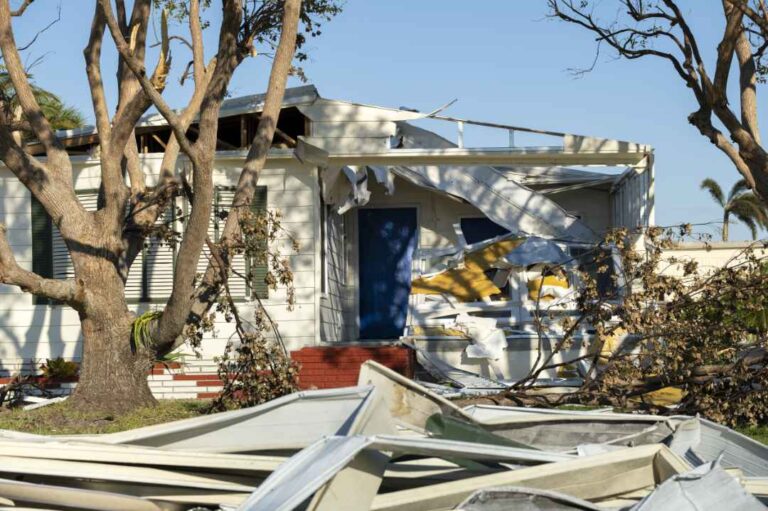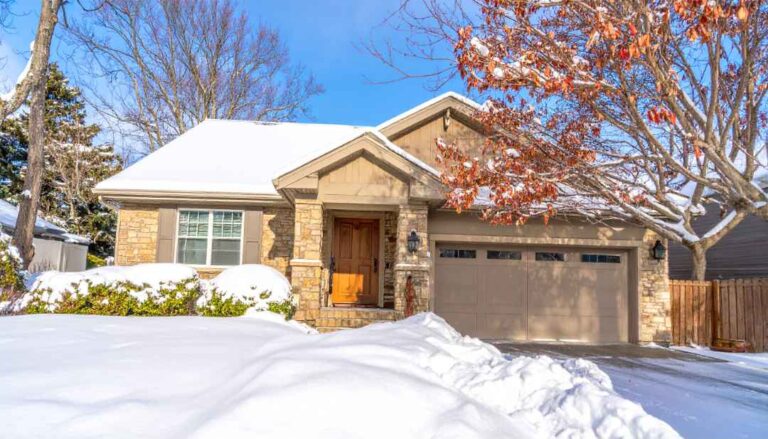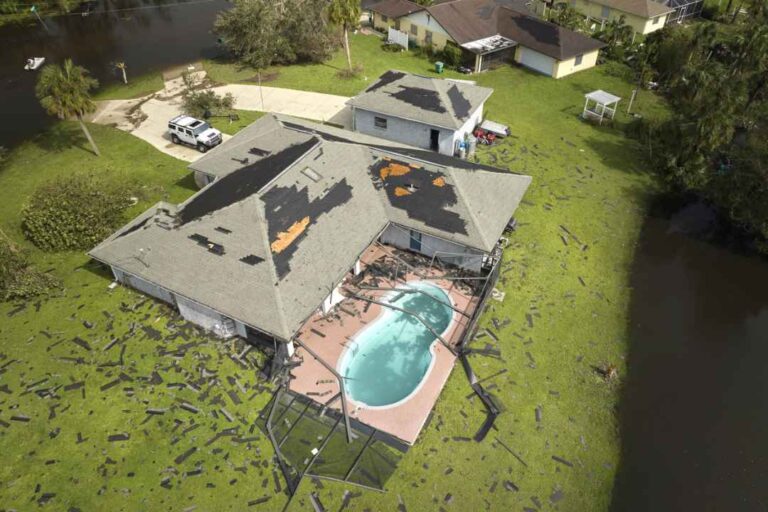The Invisible Intruder – When Rain Stops Falling and Starts Driving
In Chicagoland, we’re no strangers to severe thunderstorms. We anticipate heavy rainfall, but sometimes, the rain doesn’t just fall; it’s driven horizontally by powerful winds. This “wind-driven rain” is a sneaky and formidable foe for your home, capable of pushing moisture into cracks and crevices that regular vertical rain would never find. Your windows, designed to be watertight under normal conditions, become particularly vulnerable entry points during these intense events.
A leaking window isn’t just an annoying drip; it’s a direct threat to your home’s interior, leading to insidious water damage, mold growth, and compromised structural integrity if left unaddressed. Spotting these leaks early and understanding how to prevent them is crucial for any homeowner in Illinois.
At Seidel Exterior Group, we’ve been protecting Chicagoland homes from the elements since 1970. We understand the specific mechanisms of water intrusion in our climate and specialize in diagnosing and resolving window leaks caused by severe weather. This article will explain how wind-driven rain can breach your window’s defenses, how to spot the subtle (and not-so-subtle) signs of leaks, and crucial steps to prevent costly water damage to your home.
How Wind-Driven Rain Finds Its Way In: Breaching the Barriers of your windows
Windows are designed with multiple layers of protection to keep water out. However, wind-driven rain exerts pressure that normal rainfall does not, forcing water into weak points that typically remain dry. Here’s how it often happens:
- Compromised Seals and Weatherstripping: Over time, exposure to Chicagoland’s extreme temperatures (freeze-thaw cycles, intense heat) and UV radiation causes window seals (the caulk around the frame, between the glass panes, or at the sash) and weatherstripping to degrade, crack, shrink, or lose their elasticity. Wind-driven rain exploits these tiny breaches, pushing water directly into the window frame or wall cavity.
- Failed Flashing: Flashing is a critical, thin material (often metal or specialized membrane) installed around the window frame to direct water away from the opening and into the wall drainage system. If flashing is improperly installed, damaged, or has deteriorated, wind-driven rain can bypass it, seeping directly into the wall assembly around the window. This is a very common cause of leaks, often appearing at the top corners or along the sides.
- Clogged or Damaged Weep Holes: Modern windows have small “weep holes” at the bottom of the exterior frame. These are designed to drain any water that gets into the sill pocket (e.g., from condensation or minor leaks). If these holes become clogged with dirt, debris, or insects, or if they are improperly manufactured, wind-driven rain can cause water to back up and overflow into the interior.
- Improper Installation: Even a brand-new, high-quality window can leak if not installed correctly. This includes issues like:
- Incorrect Pitch: The window sill or frame might not be adequately pitched outwards, allowing water to pool rather than drain away.
- Inadequate Sealing: Insufficient or incorrect application of sealants around the window frame.
- Improper Integration with House Wrap/Siding: If the window isn’t properly integrated with the home’s moisture barrier (house wrap) and siding, water can get behind the exterior finish and track along the window frame.
- Age and Material Deterioration: As windows age, their materials naturally degrade. Wood frames can rot or warp; vinyl frames can become brittle and crack; and even high-quality seals can eventually fail. Wind-driven rain accelerates the revelation of these weaknesses.
- Siding Issues Above the Window: Sometimes, the leak isn’t directly from the window itself, but from compromised siding or flashing above the window. Wind-driven rain gets behind the siding, runs down the wall, and then enters the home around the window opening. This is why a holistic exterior assessment is crucial.
How to Spot Leaks and Water Damage After Wind-Driven Rain
It’s crucial to inspect your windows, both inside and out, after any severe Chicagoland storm with strong winds and heavy rain. Be thorough, as some signs can be subtle.
Immediate (During or Shortly After the Storm):
- Visible Water: The most obvious sign. Look for drips, streams, or pooling water on the window sill, window frame, or directly below the window on the floor or carpet.
- Dampness to the Touch: Run your hand along the window frame (especially the bottom and sides), the sill, and the adjacent drywall or paint. Feel for any dampness, even if no visible water is present.
- Discolored Spots (New): Look for new, darker spots or streaks on drywall, wallpaper, or paint around the window frame. These are often water stains that indicate a leak.
- Condensation Between Panes: While condensation on the surface of a window is normal, condensation or fogging between the glass panes indicates that the insulated glass unit’s seal has failed. This doesn’t mean it’s leaking from wind-driven rain yet, but it means the unit is compromised and more vulnerable to future leaks and energy loss.
Delayed or Chronic Signs (Days, Weeks, or Months Later):
- Peeling, Bubbling, or Discolored Paint: Water seeping into the wall cavity or behind the paint will cause it to blister, peel, or change color on the window frame, sill, or adjacent walls.
- Warped or Swollen Wood: Wooden window frames, sills, or trim that appear warped, swollen, or distorted are clear signs of prolonged moisture exposure.
- Soft or Spongy Drywall/Wood: Gently press on the drywall or wood trim around the window. If it feels soft, spongy, or crumbles, it indicates rot due to water damage.
- Musty Odor: A persistent musty or earthy smell near the window or in the room can indicate hidden mold or mildew growth within the wall cavity, even if no visible water damage is present.
- Visible Mold or Mildew: Black, green, or fuzzy spots around the window frame, on the sill, or on nearby walls are a clear sign of chronic moisture problems and potential mold growth.
- Drafts: While not directly a sign of a water leak, increased drafts around a closed window indicate a compromised seal or weatherstripping, which also makes the window more vulnerable to water intrusion during wind-driven rain.
- Higher Energy Bills: Water infiltration and compromised insulation around a leaky window will lead to reduced energy efficiency and higher heating/cooling costs.
- Damaged Flooring Below: Discolored, warped, or buckling hardwood floors, peeling linoleum, or soggy carpet directly below the window are clear signs of water dripping down.
Preventing Wind-Driven Rain Damage to Your Windows: Proactive Measures
Once you’ve spotted a leak, repair is crucial. But prevention is always better than cure, especially in Chicagoland’s climate. Here’s how to minimize your windows’ vulnerability to wind-driven rain:
- Inspect and Re-caulk Regularly: At least once a year (fall is ideal), inspect the exterior caulking around your window frames where they meet the siding or brick. Look for cracks, gaps, or areas where the caulk has pulled away. Remove old, failing caulk and apply a fresh bead of high-quality, exterior-grade silicone caulk. This is your first line of defense.
- Check Weatherstripping: Examine the weatherstripping around the sashes of your operable windows. If it’s brittle, torn, compressed, or missing, replace it to ensure a tight seal when the window is closed.
- Ensure Proper Drainage:
- Clean Weep Holes: Periodically check and clear any debris from the small weep holes at the bottom of your window frames. Use a small wire or compressed air.
- Clear Gutters: Ensure your gutters are clean and free of debris. Clogged gutters can cause water to overflow and cascade down your home’s exterior, overwhelming window seals.
- Proper Sill Pitch: Make sure your window sills are angled slightly downward to shed water away from the window, not back towards the frame.
- Inspect Flashing and Siding Above Windows: Look for any loose siding, damaged flashing, or gaps in the exterior cladding directly above your windows. Wind-driven rain can get behind these areas and track down to the window opening.
- Consider Window Upgrades: If your windows are old, single-pane, or consistently leaking despite minor repairs, it might be time for replacement. Modern, energy-efficient windows are designed with superior seals, advanced flashing systems, and multi-pane insulated glass that are far more resistant to wind-driven rain and temperature extremes.
- Professional Assessment: Even if you don’t see obvious leaks, a professional exterior inspection (especially after a severe storm) can uncover subtle issues before they become major problems.
When to Call the Experts: The Seidel Exterior Group Difference
While you can handle basic checks and re-caulking, persistent leaks, visible water damage, or widespread issues after a storm require professional intervention. Addressing window leaks is often more complex than it appears, as the source of the leak might be upstream from the visible symptom (e.g., roof issues, siding issues, or flashing problems).
At Seidel Exterior Group, we are your Chicagoland window and exterior experts. We provide:
- Comprehensive Diagnostics: Our experienced team doesn’t just treat the symptom; we meticulously pinpoint the root cause of your window leaks, whether it’s faulty flashing, compromised seals, improper installation, or related roof/siding issues.
- Expert Repairs: We offer skilled repair services for specific window components (seals, sills, flashing) where appropriate.
- High-Quality Window Replacement: If your windows are old, severely damaged, or continuously failing, we provide and install a wide range of energy-efficient, weather-resistant replacement windows designed to perform flawlessly in Illinois’s climate.
- Holistic Exterior Assessment: As full-service exterior contractors, we understand how your roof, siding, and windows interact. We can assess the entire exterior envelope to ensure complete water protection.
- Insurance Claim Assistance: If your window damage is storm-related, we can assist you with your insurance claim, providing accurate estimates and supporting documentation.
Protect Your Home’s Interior from the Elements
Wind-driven rain is a formidable challenge for any home in Chicagoland, and your windows are on the front lines. By understanding how these leaks occur, knowing how to spot the signs of water intrusion, and taking proactive preventive measures, you can safeguard your home’s interior from costly damage.
Don’t let a “minor drip” turn into a major problem. If you suspect wind-driven rain is compromising your windows, or if you’re ready to upgrade to more resilient, energy-efficient units, trust the local experts.
Contact Seidel Exterior Group today for a free, comprehensive window inspection and consultation. Let us help you ensure your Chicagoland home remains dry, comfortable, and protected, no matter how hard the wind drives the rain.



